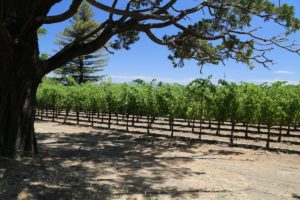
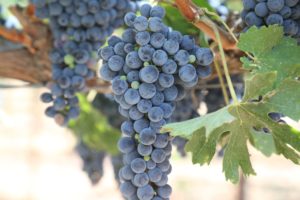
 Hayfork Wine Company initially focused on Cabernet Sauvignon, crafting one wine from the same block within the historic Lewelling Vineyard in St. Helena each year. As the brand has evolved, they now produce several wines from this property, a couple of other unique for a Napa producer bottlings, and also a wine from a very rare variety growing in Napa Valley, Grenache Blanc.
Hayfork Wine Company initially focused on Cabernet Sauvignon, crafting one wine from the same block within the historic Lewelling Vineyard in St. Helena each year. As the brand has evolved, they now produce several wines from this property, a couple of other unique for a Napa producer bottlings, and also a wine from a very rare variety growing in Napa Valley, Grenache Blanc.
Lewelling Vineyard is one of the oldest continuously owned and family farmed pieces of land in the Napa Valley – therefore a little history is in order. John Lewelling came to the Napa Valley in 1864, built a house in 1870 (still there by the way) and planted vineyards along with prunes and walnuts. He built a winery just off of Main Street in St. Helena (now part of a residential property) and also owned a wine warehouse in town in partnership with several of the Napa Valley’s other winery pioneers Charles Krug and the Beringer brothers. For more information about this historically rich and significant property, please reference our reviews, also on this site, of Lewelling Vineyards and also Taplin Cellars.
Phylloxera infested the vineyard in the late 1800s and the family switched to growing primarily walnuts. They also installed a dehydrator on the property; local farmers with other small orchards around the valley would bring their walnuts to be dried. This lasted until the 1970’s. Cabernet Sauvignon was first planted on site in 1972. After realizing how well this variety grew on the property over the years the family continued to plant Cabernet Sauvignon and today this variety comprises about 95% of what is grown in the vineyard.
The original planting of this variety lasted well over 30 years until 2008 when production dropped to the point that these old vines were removed and replanted again. Eighty vineyard acres are planted including smaller amounts of Merlot, Cabernet Franc and Petit Verdot. The vineyard is located on alluvial soils that have drained down from the Mayacamas mountains over the centuries, coveted bench-land if you will.
Hayfork is run by the husband wife team of Erik Dodd and Haley Wight. Erik helps manage Lewelling Vineyard as well as another 500 acres up and down the valley for his father-in-law, Doug of Wight Vineyard Management. Haley is Hayfork’s winemaker – she grew up on the property – spending one’s formative years in agricultural settings are invaluable. To quote from Hayfork’s website, she says, “As a child I roamed my family’s ranch with a sense of freedom most children today are denied. I explored creeks, climbed trees, picked berries and walked through vineyard rows searching for arrowheads. I was grateful to know the land, but in my innocence did not realize how quite fortunate I was.”
Haley’s previous wine making experience in the Napa Valley was at Terra Valentine as well as at Ballentine Vineyards. Today she focuses her efforts on Hayfork and also makes the wine for Lewelling Vineyards.
As Erik told us, he considers Hayfork privileged to be able to source fruit from the Lewelling Vineyard. Top producers in the valley have and currently source from the vineyard including Caymus, Viader, and Beaulieu Vineyard. Today there is even a waiting list for fruit from this vineyard.
Select Wines
Whites
Grenache Blanc is widely planted the southern Rhone region of France but in Napa Valley, its production is extremely limited. Two vineyards we know of in the region growing this variety are Somerston and Kenefick Ranch. The first block of Grenache Blanc planted in the U.S. was in 1995 by Tablas Creek in Paso Robles. Kenefick Ranch in Calistoga is the source for Hayfork’s bottling. The 2022 Hayfork Grenache Blanc, Calistoga Napa Valley is pale gold in color; the aromatics smell fresh, youthful and are sweetly fruited accompanied by white florals. The bouquet offers scents of yellow nectarine, pineapple, citrus blossom, jasmine and honeysuckle. There is also a light and lovely herbal note present which is perhaps a combination of both lemongrass and a lemon zest. The palate offers a flinty minerality with flavors of pineapple, red apple and citrus. The mouth feel is rounded with a saline/ almost brine-like character. The rich flavors are paralleled nicely by a brightness of persistent acidity. If we were drinking this wine in Thailand during our annual winter stay, we would pair this with stir fried spicy garlic shrimp.
The 2022 Hayfork Marsanne, Calistoga Napa Valley is medium to deep straw in color; the bouquet offers a minerally character and reminded us of sitting on a bluff above the rugged Sonoma County coastline and smelling the fresh and crisp saline air on a day where the fog is lingering just off shore and the sun has warmed things up enough that a jacket is no longer needed. This bouquet also offers scents of citrus blossom, kaffir lime, young spruce tips, beeswax and slightly under ripe pineapple. The palate reveals flavors of mandarin orange, quince, lemon juice and green apple. Medium acidity. Pair with shellfish. Or crab. Or lobster. Napa Valley Marsanne is a bit more common than Napa Valley Grenache Blanc but still, plantings are extremely limited. The grapes for this wine were also sourced from Kenefick Ranch in Calistoga.
Reds
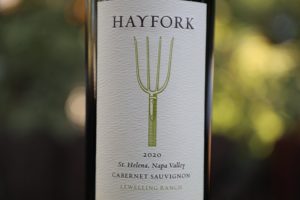
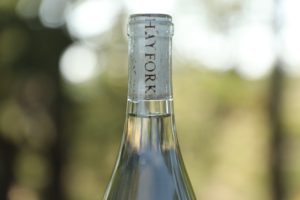
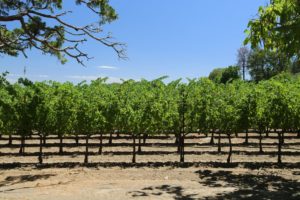 Charbono is originally from Savoie, in eastern France. Napa Valley based winemaker Rory Calder and grower of Charbono told us in his research he spotted records of Charbono planted in Amador County in California’s Sierra Nevada foothills dating back to at least the 1870s. Charbono is also known as Bonarda, a popular variety in Argentina. However, it is not currently well-known in California; in fact, there are only approximately 70-80 acres of this variety planted in the state and according to the 2018 Napa County crop report, 44 bearing acres of Charbono grow in Napa Valley, a significant amount of that near Calistoga.
Charbono is originally from Savoie, in eastern France. Napa Valley based winemaker Rory Calder and grower of Charbono told us in his research he spotted records of Charbono planted in Amador County in California’s Sierra Nevada foothills dating back to at least the 1870s. Charbono is also known as Bonarda, a popular variety in Argentina. However, it is not currently well-known in California; in fact, there are only approximately 70-80 acres of this variety planted in the state and according to the 2018 Napa County crop report, 44 bearing acres of Charbono grow in Napa Valley, a significant amount of that near Calistoga.
This variety produces wines dark in color with lower acidity but higher pH, lower alcohol and no pyrazines (the compound resulting in a green character). It is also a highly tannic wine so careful tannin management both in the vineyard and in the cellar is required. Charbono can be a challenging variety to grow as bud break comes very early in the season, typically before the frost season is over and it can be extremely slow to ripen. It reaches its phenolic maturity often when the sugars are still much lower than other red varieties. It does well in Calistoga because of the diurnal temperature difference between day and night which is often 30-45 degrees on a summer day. It can also be blended, even in small percentages to coax out fruit characteristics of other varieties.
The 2021 Hayfork Charbono Napa Valley, from the Heitz Family Ranch in Calistoga, is deep ruby and opaque with an amaranthine rim; the bouquet sports brightly lit scents of berries including blackberry, bramble, and blueberry accompanied by dark plum, menthol, a light minty character, lavender, rose petals, dark chocolate and crushed black pepper (but not overtly spicy). Dark fruited across the palate, it echoes some of the aromas with flavors of blackberry, dark cherry, Santa Rosa plum, boysenberry and blueberry. It’s texture is a hallmark characteristic; the tannins are dense, but ripe and rounded and surprisingly resolved for such a youthful wine and for a variety known for its robust texture (we tasted this two years post vintage). The finish lingers savory with a meaty/gamey character, crushed peppercorn, dried herbs including sage and a light but persistent drying character. True to its nature, this wine is only 13.4% alcohol. It was aged in 100% neutral oak barrels. Best pairing would be a thick, well marbled tenderloin covered in a spicy dry rub and cooked to perfection, which for us is medium rare.
Since our focus is on Napa Valley producers, we don’t get to try much Carignan simply because there are few vineyards planted in Napa Valley. The ones we do try from Napa producers are typically sourced from outside of the county like the Hayfork bottling. The 2021 Hayfork Mendocino County Carignan (100% varietal) is deep ruby in color. The bouquet offers both darker gamey scents in union with plenty of red fruits including raspberry, red licorice and cranberry along with rose petals, dry earth and white pepper. The palate is bright with energetic acidity and layers of fruit including flavors of cherry, dark raspberry, pomegranate and currant. This bottling features lots of tannins but they are rounded and in their youth show a certain sediment like texture. The lively finish lingers with a persistent chalky character.
 The 2020 Hayfork Cabernet Sauvignon Lewelling Ranch is 98% Cabernet and 2% Petit Verdot. This wine is deep ruby in the glass; the bouquet is ripe and dark fruited with aromas of cherry, blackberry, boysenberry, mulberry and dark chocolate. Other aromatic layers include sweet tobacco spice, toasted oak, cloves, cardamom and mocha. This wine is quite enjoyable to smell. The palate is packed with flavors of both red and darker fruits including plum, blackberry, boysenberry and dark raspberry. The tannins are firmly textured but well-integrated and show a gravelly, lightly drying character which is more pronounced on the front of the palate than the back. The finish lingers with an appealing brightness of fruit which parallels the tannins for quite some time. This is clearly the reserved cousin of the more hedonistic Field Select bottling of the same vintage.
The 2020 Hayfork Cabernet Sauvignon Lewelling Ranch is 98% Cabernet and 2% Petit Verdot. This wine is deep ruby in the glass; the bouquet is ripe and dark fruited with aromas of cherry, blackberry, boysenberry, mulberry and dark chocolate. Other aromatic layers include sweet tobacco spice, toasted oak, cloves, cardamom and mocha. This wine is quite enjoyable to smell. The palate is packed with flavors of both red and darker fruits including plum, blackberry, boysenberry and dark raspberry. The tannins are firmly textured but well-integrated and show a gravelly, lightly drying character which is more pronounced on the front of the palate than the back. The finish lingers with an appealing brightness of fruit which parallels the tannins for quite some time. This is clearly the reserved cousin of the more hedonistic Field Select bottling of the same vintage.
The 2017 Hayfork Cabernet Sauvignon, Lewelling Ranch was blended with 4% Petit Verdot and aged for 20 months in 3/4 new French oak. The wine is deep ruby in color. Initially immediately upon opening, aromas show of cocoa powder and mocha, toasted cedar, white pepper and dark plum. There is a ‘deepness’ to the bouquet but also an elegance. Opens up beautifully given time, showcasing the rich fruit; it is briary and brambly along with aromas of sweaty leather gloves. Showcases plenty of depth and ripeness on the palate with flavors of dark cherry and blueberry. Juicy with good acidity. Offers a framework of rounded tannins with a light to moderate grip on the finish lingering with some darker spices including cedar. Drinks very well in its youth. It was nice to try this wine nearly 10 years after our last tasting.
The 2020 Hayfork Field Select Cabernet Sauvignon is deep ruby in color and nearly opaque; this is a blend of 90% Clone 6 Cabernet Sauvignon and 10% Petit Verdot. It was aged for in 85% new French oak barrels. The bouquet is sweetly fruited with aromas of blackberry jam, a scent that brought us back to our time in college at Cal Poly in San Luis Obispo and weekend breakfasts at the Apple Farm Restaurant when our parents were in town. The Apple Farm is known for their delicious blackberry preserves. Plenty more ripeness is at play here including notes of boysenberry, Santa Rosa plum, Pakistani mulberry, dark raspberry, warm milk chocolate and loads of espresso. But the fruit clearly dominates. The palate echoes the bouquet to some extent and sports flavors of blackberry, boysenberry, dark cherry and chocolate. This bottling is opulent and lush with mouth filling flavors but without heavy texture. The tannins are ripe, resolved and rounded and linger with a gentle feel.
The 2017 Hayfork Field Select Cabernet Sauvignon, (also from the Lewelling Ranch) is a blend of 90% Cabernet Sauvignon and 10% Petit Verdot. The wine was aged 20 months in 100% new French oak; it is very dark in the glass. Immediately offers a ripe yet elegant bouquet that is focused more on the richness of the fruit rather than secondary aromas. Ripe blackberry, with a chalky-like dustiness to the aromatics – one can almost picture being tangled up in blackberry patch, picking ripe berries on a hot dusty day. Also, some notes of cigar smoke and mocha. Riveting. On the palate: a mouthful of fruit with intensity including flavors of boysenberry, blackberry and dark cherry. Well integrated somewhat earthy tannins are moderate in their textural feel. Very limited production, only 80 cases. Somewhat Bevan-esque in its hedonism 🙂 A lovely wine.
The 2008 Hayfork Cabernet Sauvignon is blended with 5% Merlot (also grown at the Lewelling Vineyard). At the time of we tasted this wine, it had not yet been released. It was aged in 75% new French oak barrels. Haley’s wine making style is more old-school – relying primarily on management practices in the vineyard along with a carefully chosen harvest date but simultaneously representing the ripeness of contemporary Napa Valley wines. All their wines are fermented in small lots. This wine shows dark ruby color in the glass. The bouquet changes nicely as it breathes showcasing aromas of vanilla, brown chocolate and fruit including black currant and red cherry. The wine features a soft mouth feel until mid-palate where it gains in complexity; this bottling is very flavorful. Both dusty fruit and oak tannins including notes of cedar (not overly robust tannins) linger for some time and anchor the very long finish.
The 2009 Hayfork Cabernet Sauvignon like the other wines we have tasted from the Lewelling Vineyard shows plenty of fruit on the nose. It is quite dark in the glass with bold berry fruit flavors on the palate. Dusty tannins linger for some time on the finish complemented by a nuance of cocoa powder. Like the previous vintage, this was bottled unfined and unfiltered.
—
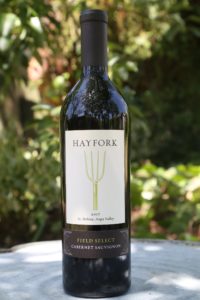 Haley and Erik chose the name “Hayfork” for a variety of reasons – and it has several related meanings. It is a play on Haley’s name and is also a reference to the tiny town of Hayfork in the Trinity mountains of Northern California where over the years, the family has spent quite a bit of time fishing and relaxing. Located about a 4.5-hour drive north of St. Helena (closer to Redding than Eureka) the town is home to a population of around 2,400 residents.
Haley and Erik chose the name “Hayfork” for a variety of reasons – and it has several related meanings. It is a play on Haley’s name and is also a reference to the tiny town of Hayfork in the Trinity mountains of Northern California where over the years, the family has spent quite a bit of time fishing and relaxing. Located about a 4.5-hour drive north of St. Helena (closer to Redding than Eureka) the town is home to a population of around 2,400 residents.
The first westerner to pass through what is now Hayfork was explorer and trapper Jedediah Smith in 1828. The town’s name was chosen due to the nearby hay fields – this part of Trinity County is home to a number of ranches and various agriculture. Well spread out over several miles, there is no ‘center’ of town that one would expect to find with a gold rush era settled community.
About a 15-minute drive away is Bridge Gulch, site of the Bridge Gulch Massacre in which over 150 native Americans (Wintu) were killed in a raid in 1852, only a year after the town was founded. Over the years the town has been home to gold miners (there are still numerous mining claims in the vicinity) and those working in the logging industry. Hayfork Creek (which passes through town) is known for its river rafting, appealing to experienced white-water enthusiasts.
Hayfork, California
And the image of an actual hayfork, is a tribute to their long farming background. Their first vintage was in 2006.
Tasting Room
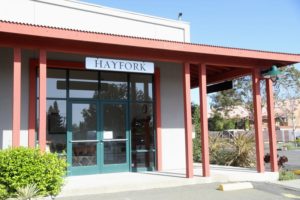
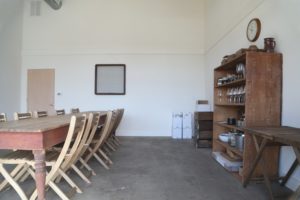 Hayfork maintains a small tasting room in a one story complex of office spaces along Vidovich Lane in St. Helena. Hayfork moved into this space in 2021; it is a very short walk to one of their winery neighbors, the Clif Family tasting room and the Clif Family food truck which is often-parked curbside.
Hayfork maintains a small tasting room in a one story complex of office spaces along Vidovich Lane in St. Helena. Hayfork moved into this space in 2021; it is a very short walk to one of their winery neighbors, the Clif Family tasting room and the Clif Family food truck which is often-parked curbside.
Visits are by appointment and are typically hosted with Haley or her brother Neal. As of our latest update to this review, visitors are hosted on Thursdays and Fridays for indoor or outdoor seating. The space is also used for a limited number of Hayfork member events.
—
With slightly under 1,000 cases currently produced (depending on the year), as expected distribution is rather selective. Having the luxury of owning the vineyard and additional blocks to source from, they can expand their production as needed and have done so over the past few years. One can sometimes find the wine locally at Backroom Wines in Napa, V Wine Cellars in Yountville and ACME Fine Wines in St. Helena as well as direct through their website. For more details, to schedule a tasting or to purchase wine visit: www.hayforkwine.com






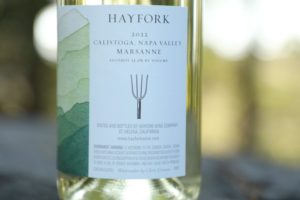
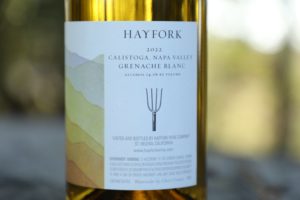
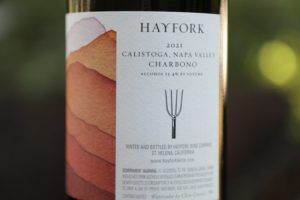
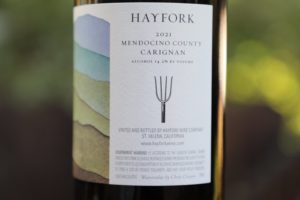
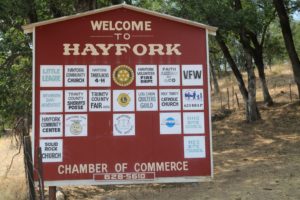
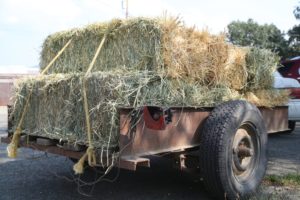
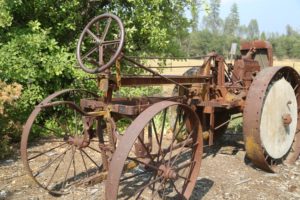
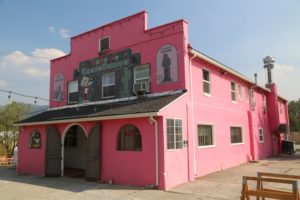
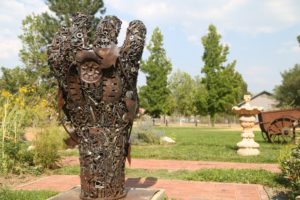
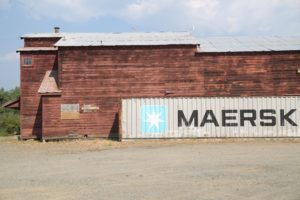
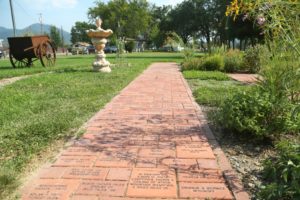
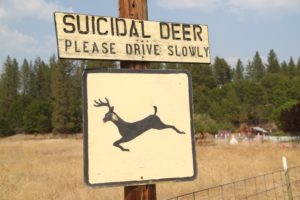
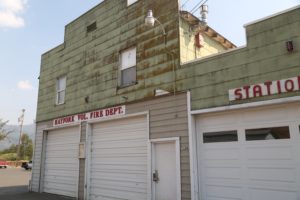
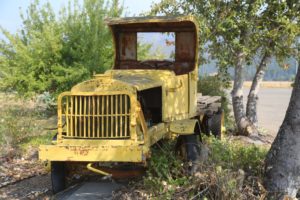
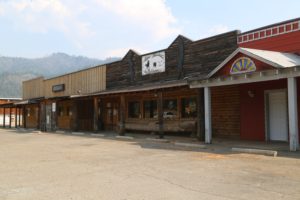
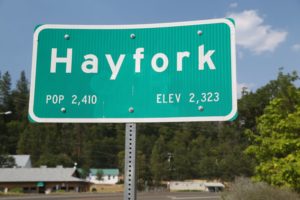
Corey with Blue Coyote in Fort Myers, FL turned us on to the 2017 Cab Sauv. Loved it!! We have collected for over 2 decades and look forward to adding a few bottles to our cellar🍷
Donna – so cool that you know Hayfork 🙂